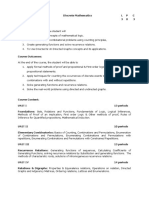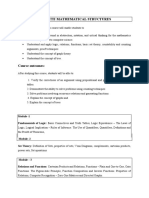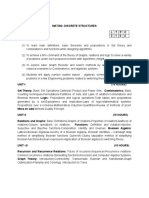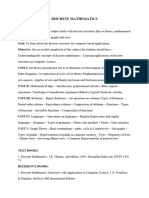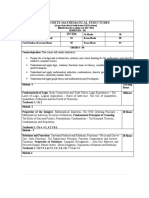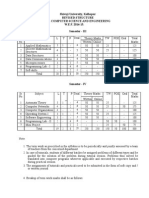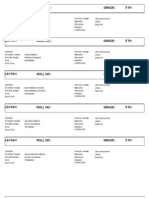0% found this document useful (0 votes)
49 views2 pagesSyllabus
The document outlines the course structure for Discrete Mathematical Structures (PGMAT114) in the M.Sc. Mathematics program, detailing prerequisites and course outcomes. Key topics include combinatorics, recurrence relations, propositional logic, partial ordering, and graph theory. Suggested textbooks for further reading are also provided.
Uploaded by
srisriCopyright
© © All Rights Reserved
We take content rights seriously. If you suspect this is your content, claim it here.
Available Formats
Download as PDF, TXT or read online on Scribd
0% found this document useful (0 votes)
49 views2 pagesSyllabus
The document outlines the course structure for Discrete Mathematical Structures (PGMAT114) in the M.Sc. Mathematics program, detailing prerequisites and course outcomes. Key topics include combinatorics, recurrence relations, propositional logic, partial ordering, and graph theory. Suggested textbooks for further reading are also provided.
Uploaded by
srisriCopyright
© © All Rights Reserved
We take content rights seriously. If you suspect this is your content, claim it here.
Available Formats
Download as PDF, TXT or read online on Scribd
/ 2


